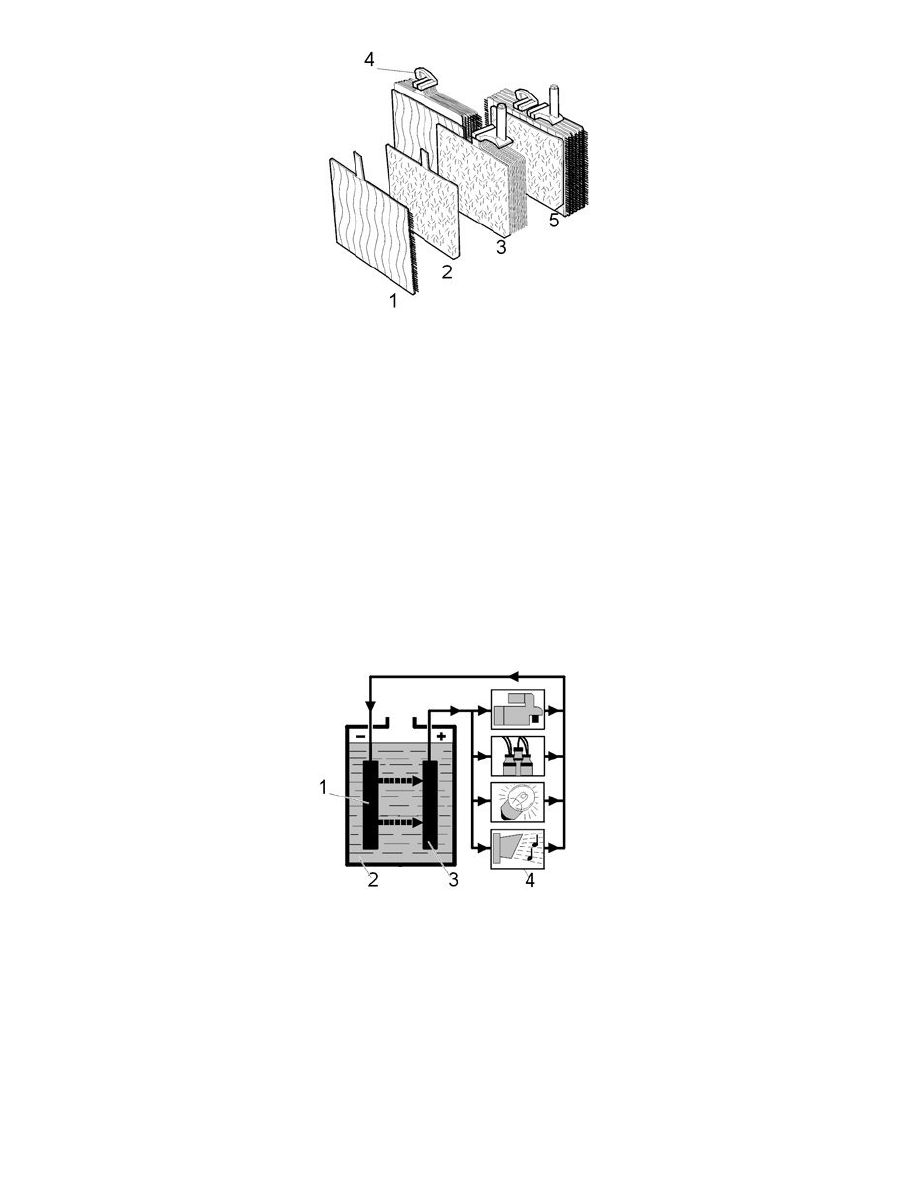V40 L4-1.9L Turbo VIN 29 B4204T3 (2002)

The construction of the cells
1. Positive plate in separator
2. Negative plate
3. Positive and negative plate assembly
4. Connection
5. Plate assembly for one cell.
A cells consists of several positive and negative plates. These plates are welded together in groups by plate straps. These plates function as electrodes in
the cell. Each positive cell is in a type of isolator, known as a separator. The task of the separator is to separate the positive and negative plates and to
catch any particles that have detached from the positive plate, thus preventing short-circuits. Each cell contains a combination of such plates connected in
series. The separators consist of an acid resistant plastic.
For AGM-batteries, the pocket separator consists of a thin fibre-glass mat (AGM = Absorbed Glass Mat).
Each plate is made up of a grille with an external layer of active material. This active material contributes to the electrochemical process during charging
and discharging. The grille is constructed of a type of a lead alloy which functions as a conductor for the active material and also carries the current. The
positive plate has an external layer of lead dioxide, while the external layer on the negative plate consists of porous lead.
The cell is surrounded by electrolyte. This is the final component of a complete cell. Each cell can generate 2.12 V (full charge at 25°C (77°F)).
For AGM-batteries, each cell can generate 2.155 V.
Discharge
The process during discharge
1. Negative plate: Pure lead is converted to lead sulphate
2. Electrolyte: The sulfuric acid is converted to water
3. Positive plate: Lead oxide is converted to lead sulphate
4. Power consuming components.
During discharge, the lead in the negative plate is converted to lead sulphate (PbSO4).
The lead dioxide (PbO2) in the positive plate is also converted to lead sulphate. During the discharge process, sulfuric acid (H2SO4) is consumed while
water (H2O) is created. This reduces the density of the electrolyte.
The density drops throughout the discharge process and can be gauged to determine the condition of the battery. The electrolyte in a fully charged
battery has a density of 1.28 g/cm3. The density of the electrolyte in a fully discharged battery is 1.10 g/cm3.
Charging
